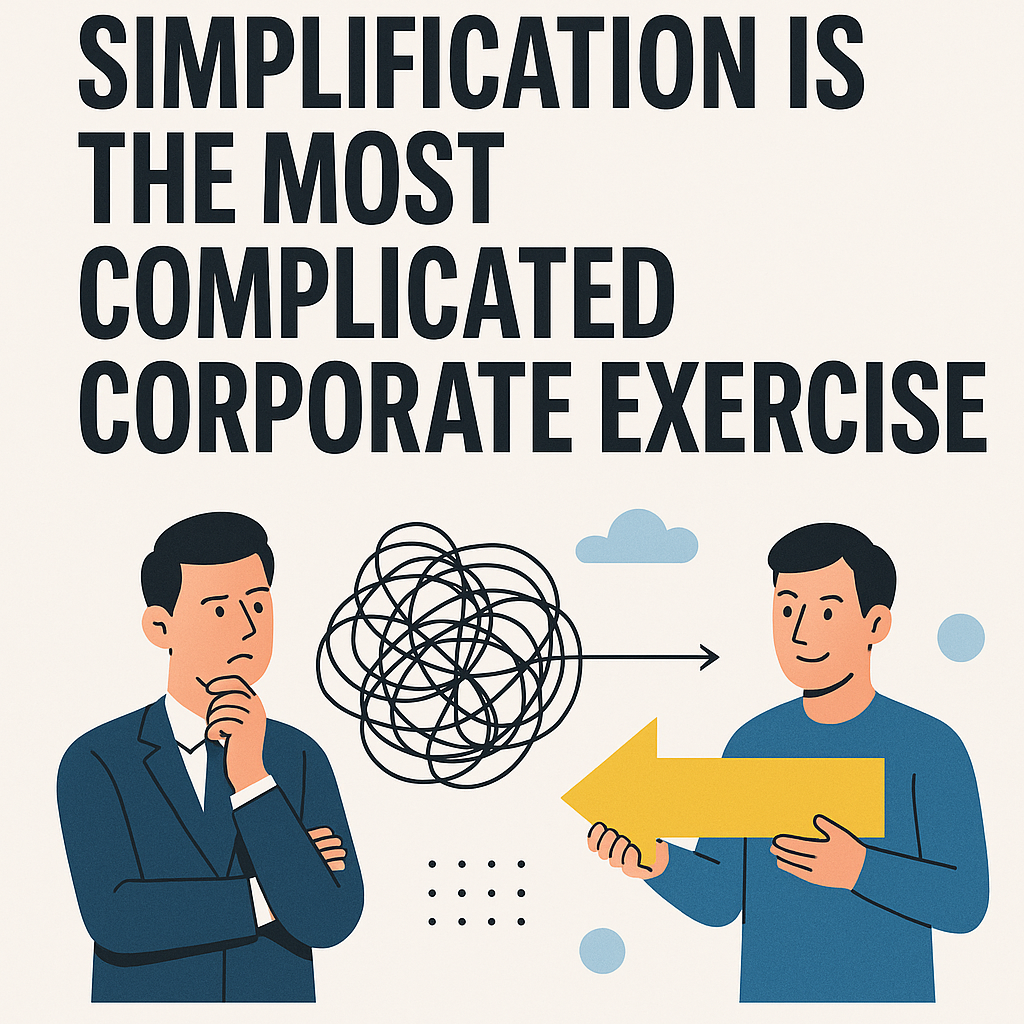Simplifying a business is like tidying an attic. You begin with noble intentions. You tell yourself you will only keep what matters. Then you start finding sentimental things, forgotten projects, and items that someone once told you were essential. A few hours later, you are surrounded by clutter, wondering how it got worse instead of better.
That is what happens when organisations try to simplify. Everyone agrees in theory. Everyone likes the sound of clarity and focus. But when simplification begins, every department fights to protect its priorities. Leaders struggle to say no. Projects that should have been retired years ago find new justifications to live on.
Simplification sounds like an act of reduction, but it is really an act of leadership. It forces you to make choices. It demands courage because every decision means leaving something behind. It challenges the comforting idea that all activities are important. They are not. Most add noise, not value.
The irony is that many simplification efforts create more complexity. They produce new committees, reports, and frameworks. By the end, the “simplified” plan is heavier than the one it replaced. The real goal of simplification is not fewer boxes on a slide but fewer distractions in real life.
True simplification requires clarity over consensus. Consensus feels safe but usually adds clutter. It also requires storytelling. People need to understand not just what has changed, but why. Otherwise, they assume simplification is a cover for cuts or politics. When you explain the logic, most people will support it, even if their own project does not survive.
When done well, simplification releases energy. Teams know what matters. Decisions become quicker. Progress accelerates. It turns confusion into direction and fatigue into focus. Done badly, it becomes another corporate buzzword that achieves the opposite of what it promised.
Simplification is not neat or easy, but it is powerful. It creates space for things that matter to breathe.
Key Takeaways
- Simplification succeeds when leaders choose focus over comfort.
- Clarity must replace consensus.
- Storytelling helps people accept difficult decisions.
- Removing distractions is more valuable than removing headcount.
- Simplification done well feels freeing, not smaller.
Try This
Ask your team to name three things they do that add the most value to customers. Then ask what they could stop doing without harm. You will see how much hidden energy is tied up in work that no longer serves a purpose.
Closing Thought
If this resonated, share it with a colleague who is drowning in priorities. A reminder that real simplification is about purpose, not PowerPoint, might help them breathe again.



